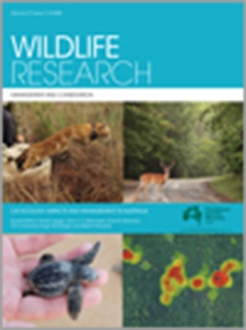Context. Tree squirrels disappear when forests are clearcut. The American red squirrel (Tamiasciurus hudsonicus) and northern flying squirrel (Glaucomys sabrinus) may occupy retention forest patches on new clearcuts, but with conflicting results with respect to area, isolation, and edge effects of patches.
Aims. We tested the hypothesis that abundance, reproduction and body mass of T. hudsonicus and G. sabrinus populations would be greater in large than small patches of retention forest on new clearcuts.
Methods. We measured demographic responses of both sciurids from 2014 to 2016 in replicated (n = 4) treatments of four sizes (ha) of retention patches (means of 0.53, 1.50, 4.13 and 18.73) in south-central British Columbia, Canada.
Key results. Mean abundance of T. hudsonicus per sample line was similar among treatment sites, ranging from 0.7 to 1.7 (2014), 1.0 to 1.7 (2015) and 0.5 to 1.3 (2016). There was a positive linear relationship of mean abundance of red squirrels and increased basal area of conifers in the larger patches. Mean numbers of G. sabrinus were consistently highest in the 4.13 ha patch class in all years and appeared to decline over time in the other patches with fewest captures in the smallest patch size. There was a significant positive linear relationship between mean overall abundance of G. sabrinus and total density of overstorey trees.
Conclusions. Mean abundance, reproduction and body mass (red squirrels) of both sciurids were generally similar among patch sizes, and hence these results did not support the hypothesis.
Implications. Although our results were short-term, habitat quality was apparently sufficient to maintain the occurrence of T. hudsonicus across patch sizes ranging from 0.3 to 20.0 ha. Glaucomys sabrinus also occurred in several patches (13 of 16), albeit at low and variable numbers.






